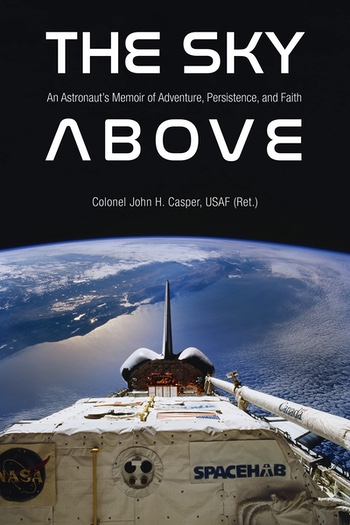Review: The Sky Aboveby Jeff Foust
|
| “Otherwise, you’ll always wonder if you could have made it if you tried one more time,” a colleague advised Casper when he considered applying again to be a NASA astronaut. |
He was able, once at NASA, to fly frequently thanks to the relative high rate of missions (at least compared to today, not to the far more optimistic projections of the early shuttle program) of the era: his first flight, as pilot of a DOD mission, launched in February 1990, and his fourth and final mission in May 1996. None of the missions stood out—no Hubble repair or Shuttle-Mir dockings, for example—but illustrated the other range of missions, like microgravity research and technology demonstration, that the shuttle performed in that era.
After his final shuttle flight, Casper remained at the agency as a safety director at the Johnson Space Center, dealing with issues involving the shuttle and station programs. While the shuttle program “was just hitting its stride” in the late 1990s, he recalled, budget cuts were causing a loss of personnel and growing concerns about safety. (Casper blames the cuts on the Clinton Administration, but those cuts were also included in spending bills passed by Congresses with Republican majorities.) After the incidents on the STS-93 launch in 1999, which included a short circuit caused a wire defect, he recalled pushing for inspections of the wiring on other orbits, only to face opposition from others on the shuttle program control board who worried about launch delays. Only after more flaws were found in “quick-look” inspections was the wiring in all four orbiters thoroughly checked.
NASA would run out of luck with Columbia a few years later, although foam shedding had been a problem for years (Casper said he found out only after the accident that form had come off the same location on the external tank on one of his launches, fortunately not hitting the orbiter.) He supported the investigation and then held managerial positions through the end of the shuttle program and then Orion before retiring shortly after the EFT-1 mission in late 2014.
Casper tells a thorough, and interesting, story of his life in The Sky Above, including the setbacks he encountered along the way and, as the subtitle suggests, how his religious faith offered guidance through difficult times. It illustrates, among other things, how active the shuttle program was in the era when he was an astronaut, but how that activity could mask, or even lead to, deeper problems down the road.
Note: we are using a new commenting system, which may require you to create a new account.
